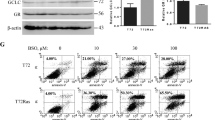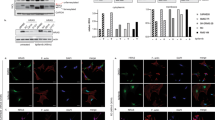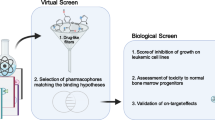Abstract
Mutations of the ras gene are among the most commonly identified transforming events in human cancers, including multiple myeloma. Farnesyltransferase inhibitors (FTI) were developed to prevent Ras processing and induce cancer cell death. Several FTIs are in phase II and one is in phase III clinical trials. Preclinically, most of the focus has been on solid tumors, and the effects of FTIs in multiple myeloma have not been investigated. In this study we examined the cytotoxic activity and inhibition of Ras processing in three myeloma cell lines with differing Ras mutation status. H929 cells with activated N-Ras were more sensitive to FTI-277 treatment than 8226 and U266 cells with activated K-Ras or wild-type Ras, respectively. A combination of FTI-277 and a geranylgeranyltransferase I inhibitor (GGTI)-2166 inhibited K-Ras processing and enhanced cell death in 8226 cells. U266 cells and Bcl-xL transfectants were equally sensitive to FTI-277 treatment. Similarly, 8226 cells selected for resistance to various chemotherapeutic agents, which resulted in either P-glycoprotein overexpression, altered topoisomerase II activity, or elevated glutathione levels, were equally sensitive to FTI-277. These preclinical studies suggest that prenylation inhibitors may represent new therapeutic agents for the treatment of refractory or drug-resistant multiple myeloma.
This is a preview of subscription content, access via your institution
Access options
Subscribe to this journal
Receive 12 print issues and online access
$259.00 per year
only $21.58 per issue
Buy this article
- Purchase on Springer Link
- Instant access to full article PDF
Prices may be subject to local taxes which are calculated during checkout




Similar content being viewed by others
References
Hallek M, Bergsagel PL & Anderson KC . Multiple myeloma: increasing evidence for a multistep transformation process. Blood 1998; 91: 3–21.
Neri A, Murphy JP, Cro L, Ferrero D, Tarella C, Baldini L & Dalla-Favera R . Ras oncogene mutation in multiple myeloma. J Exp Med 1989; 170: 1715–1725.
Liu P, Leong T, Quam L, Billadeau D, Kay NE, Greipp PR, Kyle RA, Oken MM & Van Ness B . Activating mutations of N- and K-ras in multiple myeloma show different clinical associations: analysis of the Eastern Cooperative Oncology Group phase III trial. Blood 1996; 88: 2699–2706.
Portier M, Moles J-P, Mazars G-R, Jeanteur P, Bataille R, Klein B & Theillet C . p53 and RAS gene mutations in multiple myeloma. Oncogene 1992; 7: 2539–2543.
Rowley M, Liu P & Van Ness B . Heterogeneity in therapeutic response of genetically altered myeloma cell lines to interleukin 6, dexamethasone, doxorubicin, and melphalan. Blood 2000; 96: 3175–3180.
Tu Y, Renner S, Xu F, Fleishman A, Taylor J, Weisz J, Vescio R, Rettig M, Berenson J, Krajewski S, Reed JC & Lichtenstein A . Bcl-X expression in multiple myeloma: possible indicator of chemoresistance. Cancer Res 1998; 58: 256–262.
Dalton WS, Durie BGM, Alberts DS, Gerlach JH & Cress AE . Characterization of a new drug resistant human myeloma cell line that expresses P-glycoprotein. Cancer Res 1986; 46: 5125–5130.
Futscher BW, Foley NE, Gleason-Guzman MC, Meltzer PS, Sullivan DM & Dalton WS . Verapamil suppresses the emergence of P-glycoprotein-mediated multi-drug resistance. Int J Cancer 1996; 66: 520–525.
Hancock JF, Magee AI, Childs JE & Marshall CJ . All ras proteins are polyisoprenylated but only some are palmitoylated. Cell 1989; 57: 1167–1177.
Willumsen BM, Christensen A, Hubbert NL, Papageorge AG & Lowy DR . The p21 ras C-terminus is required for transformation and membrane association. Nature 1984; 310: 583–586.
Lerner EC, Zhang TT, Knowles DB, Qian Y, Hamilton AD & Sebti SM . Inhibition of the prenylation of K-Ras, but not H- or N-Ras, is highly resistant to CAAX peptidomimetics and requires both a farnesyltransferase inhibitor and a geranylgeranyltransferase I inhibitor in human tumor cell lines. Oncogene 1997; 15: 1283–1288.
Sebti S & Hamilton AD . Farnesyltransferase and geranylgeranyltransferase I inhibitors in cancer therapy: important mechanistic and bench to bedside issues. Exp Opin Invest Drugs 2000; 9: 2767–2782.
Bernhard EJ, McKenna WG, Hamilton AD, Sebti SM, Qian Y, Wu JM & Muschel RJ . Inhibiting Ras prenylation increases the radiosensitivity of human tumor cell lines with activating mutations of ras oncogenes. Cancer Res 1998; 58: 1754–1761.
Sun J, Qian Y, Hamilton AD & Sebti SM . Ras CAAX peptidomimetic FTI 276 selectively blocks tumor growth in nude mice of a human lung carcinoma with K-Ras mutation and p53 deletion. Cancer Res 1995; 55: 4243–4247.
Sun J, Qian Y, Hamilton AD & Sebti SM . Both farnesyltransferase and geranylgeranyltransferase I inhibitors are required for inhibition of oncogenic K-Ras prenylation but each alone is sufficient to suppress human tumor growth in nude mouse xenografts. Oncogene 1998; 16: 1467–1473.
Vogt A, Qian Y, McGuire TF, Hamilton AD & Sebti SM . Protein geranylgeranylation, not farnesylation, is required for the G1 to S phase transition in mouse fibroblasts. Oncogene 1996; 13: 1991–1999.
Sun J, Blaskovich MA, Knowles D, Qian Y, Ohkanda J, Bailey RD, Hamilton AD & Sebti SM . Antitumor efficacy of a novel class of non-thiol-containing peptidomimetic inhibitors of farnesyltransferase and geranylgeranyltransferase I: combination therapy with the cytotoxic agents cisplatin, Taxol, and gemcitabine. Cancer Res 1999; 59: 4919–4926.
Oshiro MM, Landowski TH, Catlett-Falcone R, Hazlehurst LA, Huang M, Jove R & Dalton WS . Inhibition of JAK kinase activity enhances Fas-mediated apoptosis but reduces cytotoxic activity of topoisomerase II inhibitors in U266 myeloma cells. Clin Cancer Res 2001; 7: 4262–4271.
Bellamy WT, Dalton WS, Gleason MC, Grogan TM & Trent JM . Development and characterization of a melphalan resistant human multiple myeloma cell line. Cancer Res 1992; 51: 995–1002.
Ashar HR, James L, Gray K, Carr D, McGuirk M, Maxwell E, Black S, Armstrong L, Doll RJ, Taveras AG, Bishop WR & Kirschmeier P . The farnesyl transferase inhibitor SCH 66336 induces a G(2) → M or G(1) pause in sensitive human tumor cell lines. Exp Cell Res 2001; 262: 17–27.
End DW, Smets G, Todd AV, Applegate TL, Fuery CJ, Angibaud P, Venet M, Sanz G, Poignet H, Skrzat S, Devine A, Wouters W & Bowden C . Characterization of the antitumor effects of the selective farnesyl protein transferase inhibitor R115777 in vivo and in vitro. Cancer Res 2001; 61: 131–137.
Whyte DB, Kirschmeier P, Hockenberry TN, Nunez-Oliva I, James L, Catino JJ, Bishop WR & Pai JK . K- and N-Ras are geranylgeranylated in cells treated with farnesyl protein transferase inhibitors. J Biol Chem 1997; 272: 14459–14464.
Schlessinger PH, Gross A, Yin X-M, Yamamoto K, Saito M, Waksman G & Korsmeyer SJ . Comparison of the ion channel characteristics of proapoptotic Bax and antiapoptotic Bcl-2. Proc Natl Acad Sci USA 1997; 94: 11357–11362.
Karp JE, Lancet JE, Kaufmann SH, End DW, Wright JJ, Bol K, Horak I, Tidwell ML, Liesveld J, Kottke TJ, Ange D, Buddharaju L, Gojo I, Highsmith WE, Belly RT, Hohl RJ, Rybak ME, Thibault A & Rosenblatt J . Clinical and biologic activity of the farnesyltransferase inhibitor R115777 in adults with refractory and relapsed acute leukemias: a phase 1 clinical-laboratory correlative trial. Blood 2001; 97: 3361–3369.
Catlett-Falcone R, Landowski TH, Oshiro MM, Turkson J, Levitzki A, Savino R, Ciliberto G, Moscinski L, Fernandez-Luna JL, Nunez G, Dalton WS & Jove R . Constitutive activation of Stat3 signaling confers resistance to apoptosis in human U266 myeloma cells. Immunity 1999; 10: 105–115.
Lebowitz PF, Sakamuro D & Prendergast GC . Farnesyl transferase inhibitors induce apoptosis of Ras-transformed cells denied substratum attachment. Cancer Res 1997; 57: 708–713.
Acknowledgements
We thank the Flow Cytometry Core Facility at the H Lee Moffitt Cancer Center and Research Institute. This work was supported by NCI grants CA77859, CA82533, CA67771, CA76296 (H. Lee Moffitt Cancer Center Core Grant) CA21115 (ECOG) and the Peninsula Society for Myeloma Research.
Author information
Authors and Affiliations
Rights and permissions
About this article
Cite this article
Bolick, S., Landowski, T., Boulware, D. et al. The farnesyl transferase inhibitor, FTI-277, inhibits growth and induces apoptosis in drug-resistant myeloma tumor cells. Leukemia 17, 451–457 (2003). https://doi.org/10.1038/sj.leu.2402832
Received:
Accepted:
Published:
Issue Date:
DOI: https://doi.org/10.1038/sj.leu.2402832
Keywords
This article is cited by
-
The AP-1 transcription factor JunB is essential for multiple myeloma cell proliferation and drug resistance in the bone marrow microenvironment
Leukemia (2017)
-
Tipifarnib-mediated suppression of T-bet-dependent signaling pathways
Cancer Immunology, Immunotherapy (2012)
-
Activated KrasG12D is associated with invasion and metastasis of pancreatic cancer cells through inhibition of E-cadherin
British Journal of Cancer (2011)
-
Cytotoxic activity of Apomine is due to a novel membrane-mediated cytolytic mechanism independent of apoptosis in the A375 human melanoma cell line
Investigational New Drugs (2007)
-
Towards a new age in the treatment of multiple myeloma
Annals of Hematology (2007)



